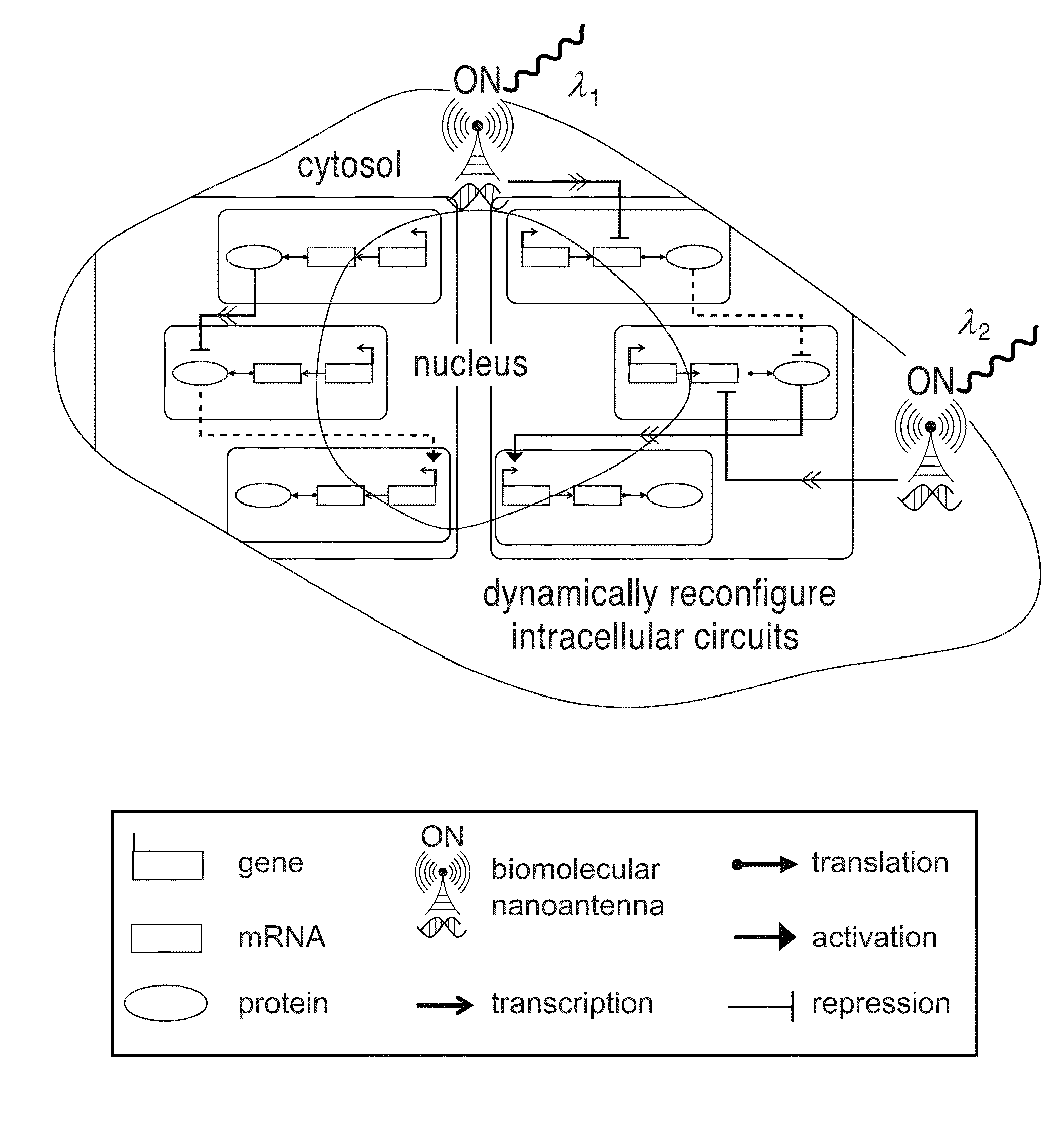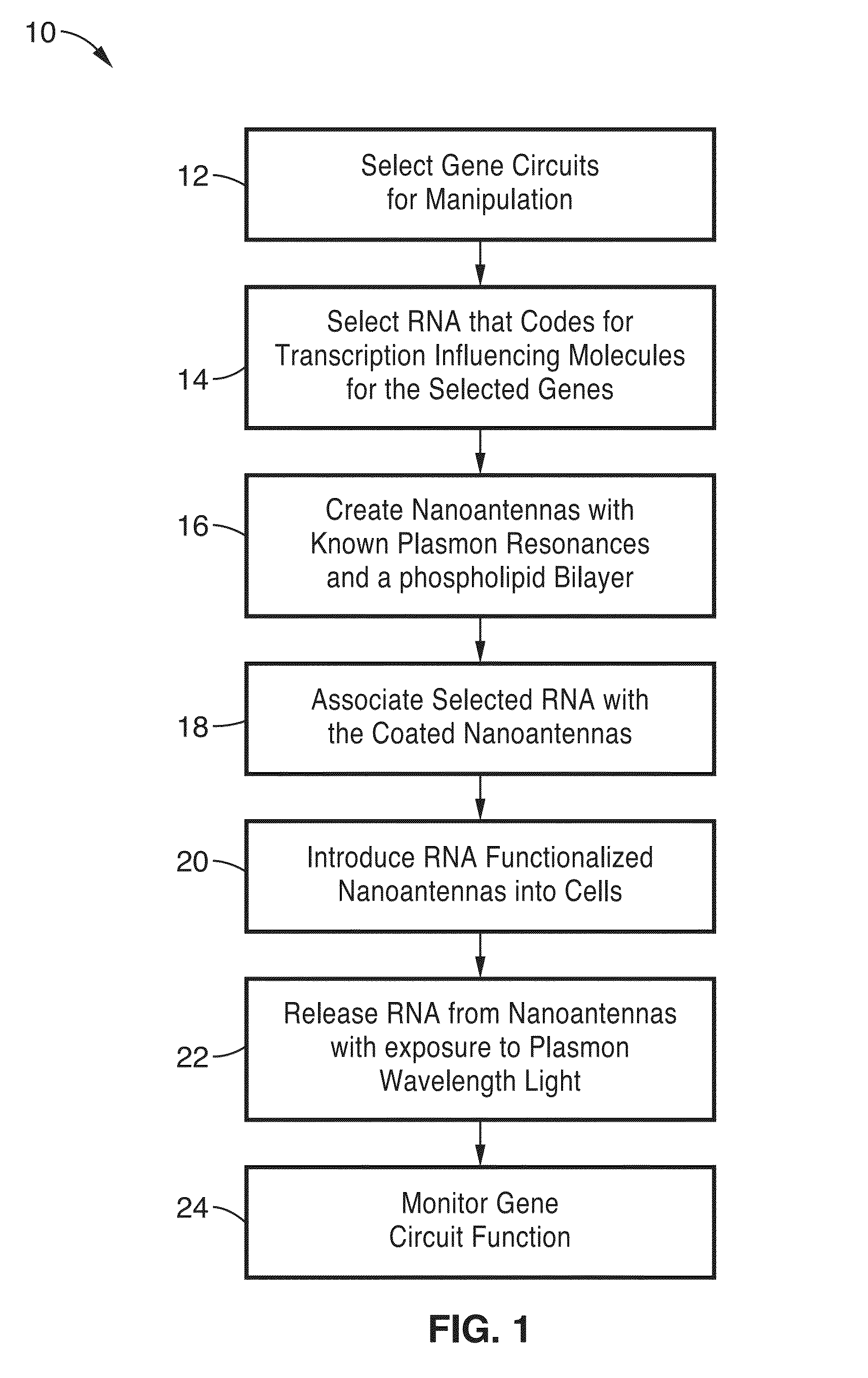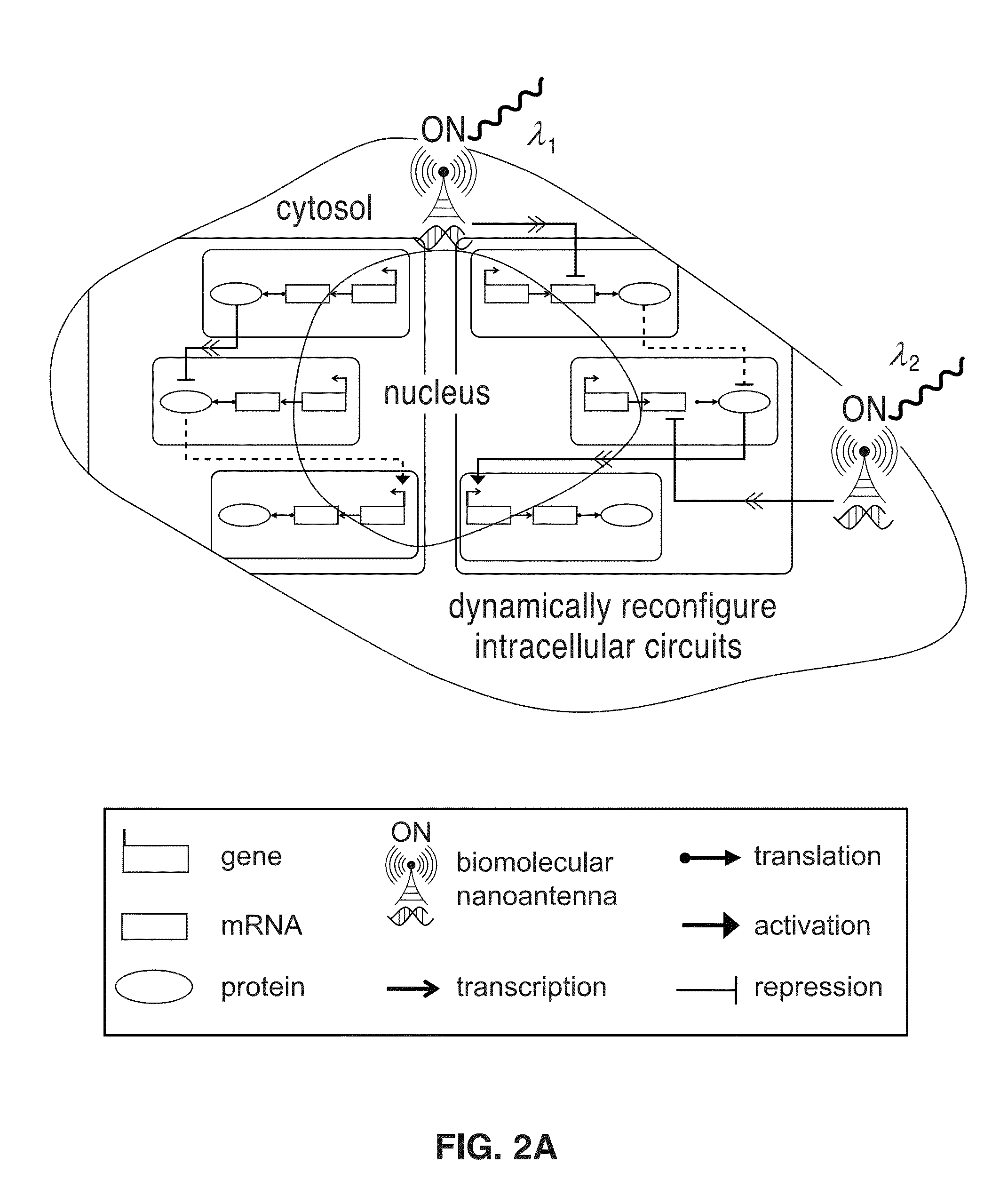Photonic nanoantenna mediated gene circuit reconfiguration
- Summary
- Abstract
- Description
- Claims
- Application Information
AI Technical Summary
Benefits of technology
Problems solved by technology
Method used
Image
Examples
example 1
[0058]FIG. 2A through FIG. 2E illustrate a photonic gene circuit according to the invention. As shown in FIG. 2A, dynamic optical circuit reconfiguration is enabled by resonant biomolecular nanoantennas as optical inputs to existing circuit connections of living cells, forming photonic gene circuits. The legend notates symbols and circuit connections.
[0059]In order to demonstrate the functionality of the biomolecular emitter concept, resonant optical nanoantenna carriers were designed such that absorption cross-sections dominate over its scattering cross-sections in order to efficiently convert absorbed optical energy into surface-localized heat.FIG. 2B illustrates conceptually the function of resonant biomolecular nanoantennas function as selectively addressable optical receivers and biomolecular emitters of molecules such as siRNA. The nanoantenna structure is preferably a nanorod made of gold material and on a scale of approximately 50 μm to 60 μm. The electric field may be calcu...
example 2
[0062]Referring now to FIG. 3A and FIG. 3B, an OFF-switch photonic gene circuit according to the invention is illustrated with a p65 biomolecular nanoantenna. Biomolecular nanoantennas were synthesized and experimentally characterized as functional optical receivers and biomolecular emitters of siRNA. Inside living cells, interfering siRNA can be selected that silences intracellular genes in a highly sequence-specific manner, but alone, it lacks the temporal control necessary for precise modulation. Biomolecular nanoantennas combine the benefits of sequence-specificity with spatiotemporal control. Optical silencing of endogenous genes has been successfully demonstrated using interfering oligonucleotides liberated from nanoantennas. Optical gene silencing was used as an optical input signal to interface existing circuit connections of living cells in order to engineer photonic gene circuits.
[0063]The circuit diagram for an OFF-switch photonic gene circuit is shown in FIG. 3A. Gene X ...
example 3
[0068]FIG. 4A through FIG. 4C illustrate an ON-switch photonic gene circuit according to the invention constructed using a modular OFF-switch sub-circuit with IκB and p65 chosen to represent Y and X, respectively. FIG. 4A shows a circuit diagram for IκB OFF-switch sub-circuit (i); a circuit diagram for non-resonant control (ii); and a circuit diagram for scrambled control (iii). The flow cytometric analysis of IκB OFF-switch sub-circuit in single HeLa cells. HeLa cells immunostained using AF488 labeled anti-IκB were used. Flow cytometric data is expressed as percent change of mean AF488 fluorescence intensity between experiment and reference cells for IκB OFF-switch sub-circuit, non-resonant control, and scrambled control. FIG. 4C shows a logic table for ON-switch photonic gene circuit. In the on-state, p65 translocates to the nucleus (p65nucleus). Immunofluorescence imaging of ON-switch photonic gene circuit in HeLa cells: DIC, anti-p65-AF488 immunostaining of p65, and DAPI stainin...
PUM
| Property | Measurement | Unit |
|---|---|---|
| Wavelength | aaaaa | aaaaa |
| Adsorption entropy | aaaaa | aaaaa |
| Aspect ratio | aaaaa | aaaaa |
Abstract
Description
Claims
Application Information
 Login to View More
Login to View More - R&D
- Intellectual Property
- Life Sciences
- Materials
- Tech Scout
- Unparalleled Data Quality
- Higher Quality Content
- 60% Fewer Hallucinations
Browse by: Latest US Patents, China's latest patents, Technical Efficacy Thesaurus, Application Domain, Technology Topic, Popular Technical Reports.
© 2025 PatSnap. All rights reserved.Legal|Privacy policy|Modern Slavery Act Transparency Statement|Sitemap|About US| Contact US: help@patsnap.com



